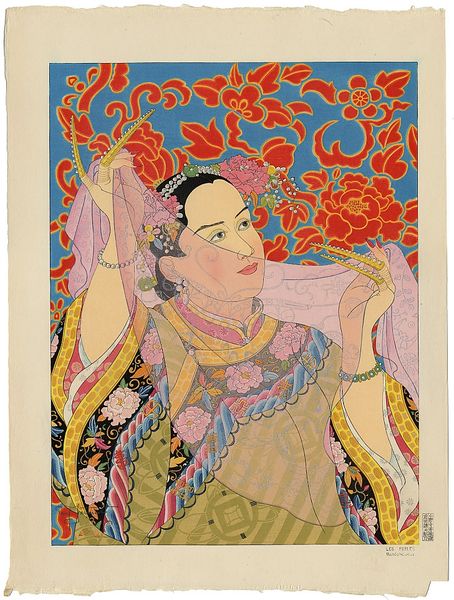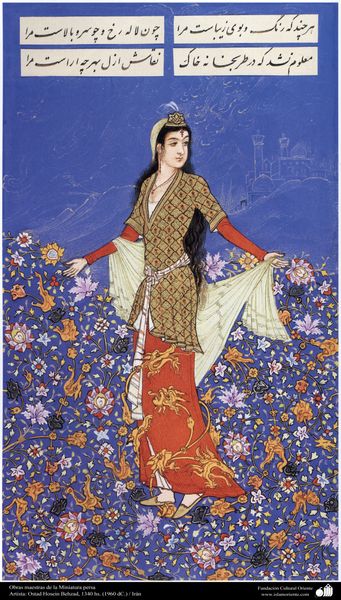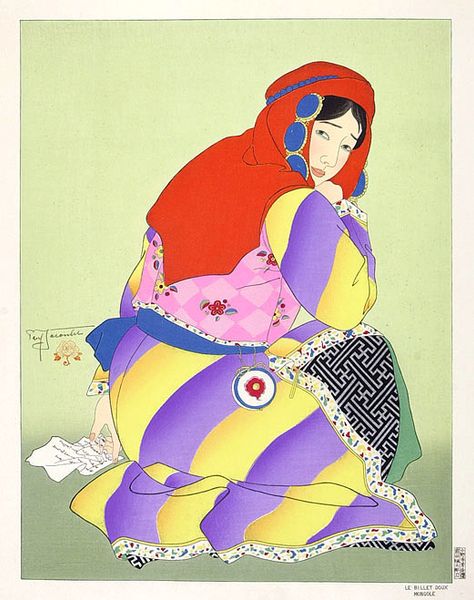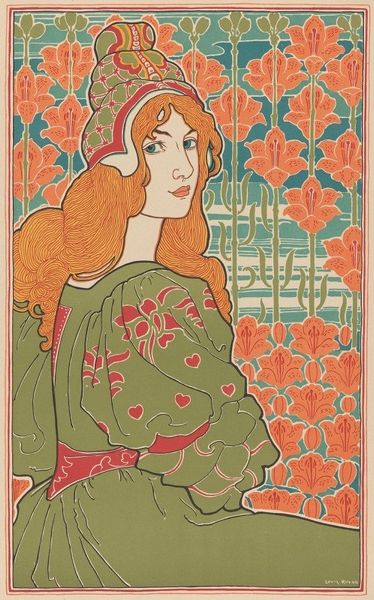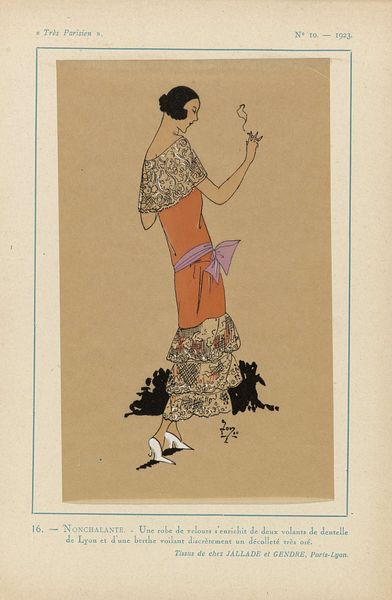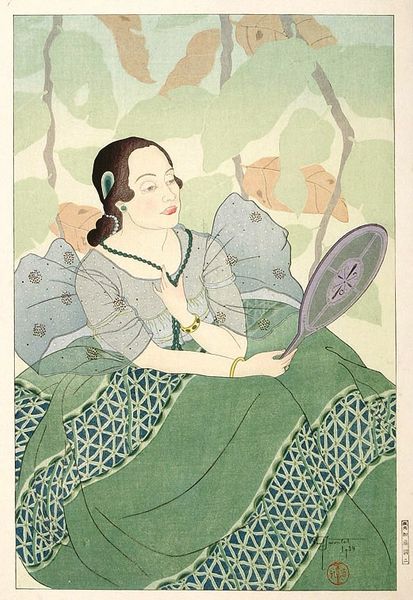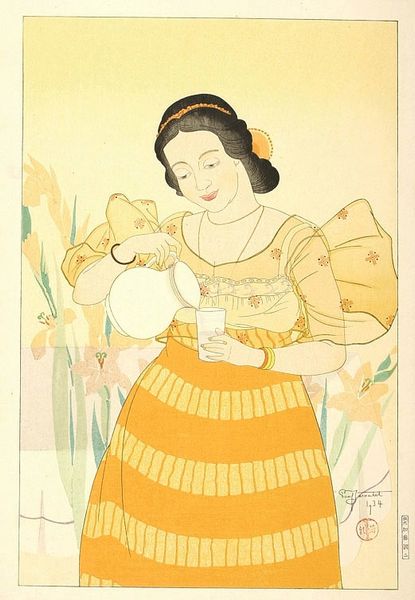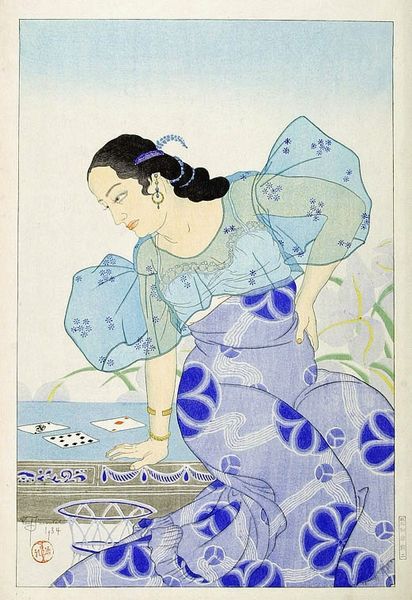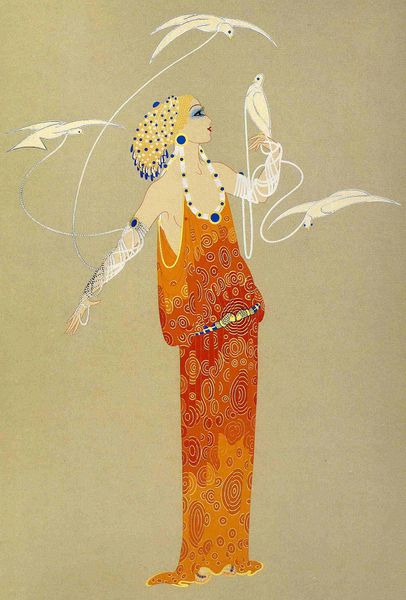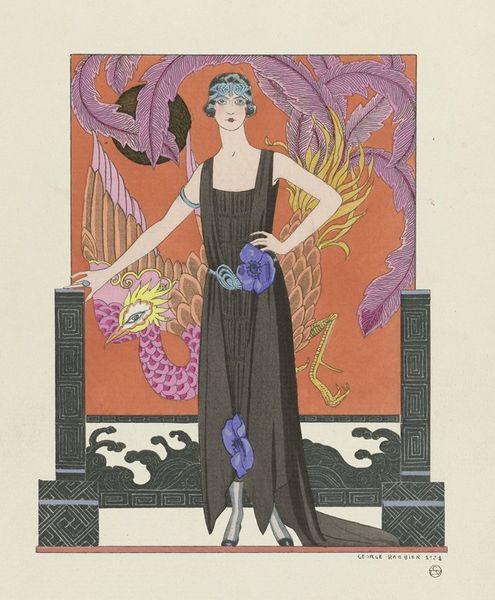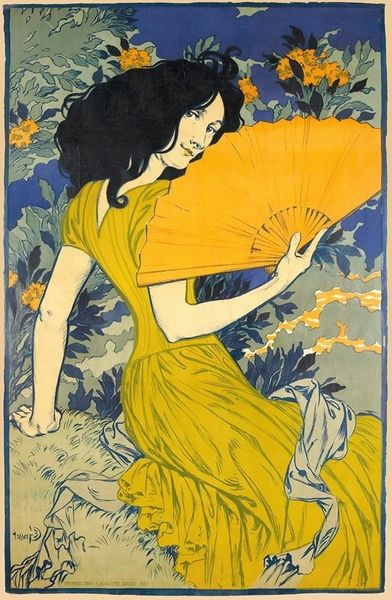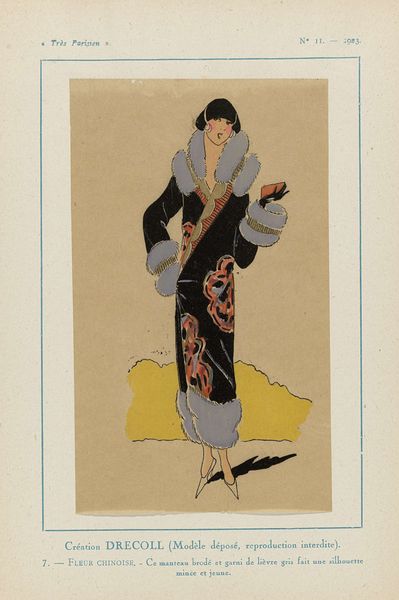
Copyright: Public domain Japan
Editor: This is “Les Aristoloches Geants. Tondano, Celebes,” a 1953 woodblock print by Paul Jacoulet. I’m immediately drawn to the vibrant colors and the flatness of the picture plane; it reminds me of Japanese Ukiyo-e prints. What do you see in this piece? Curator: For me, the key to this work lies in understanding Jacoulet's relationship to the exotic, specifically how his artistic practice engaged with the labor of creation. These intricate woodblock prints involved teams of skilled artisans – carvers, printers, papermakers – a complex division of labor that challenges the romantic notion of the solitary artist. Considering its status as a print, how might its reproducibility affect its value as a commodity? Editor: That’s a fascinating perspective. I hadn't considered the number of hands involved in making a single print, or the potential for mass production. Curator: Precisely. The materials themselves – the specific types of wood, inks, and paper – would have been consciously chosen and sourced, impacting the final aesthetic and reflecting specific cultural values tied to materiality. What do you make of the way the woman is adorned and framed with plant life? Editor: I see it as kind of decorative, adding to the overall exoticism. But you're making me wonder about the context of these materials in Celebes; were they locally sourced or imported, and how did that affect their perceived value? Curator: Exactly! Think about how Jacoulet, as a Western artist working in an Asian medium, complicates the dynamics of cultural appropriation and artistic production. Considering that Celebes had undergone colonization by multiple European powers, what statement is he making? Editor: I never considered it that deeply. I initially focused on the image's surface and didn't appreciate the intricate processes behind it. Curator: That’s the beauty of materialist analysis; it encourages us to unpack the layers of production, consumption, and cultural exchange embedded within a work of art.
Comments
No comments
Be the first to comment and join the conversation on the ultimate creative platform.
